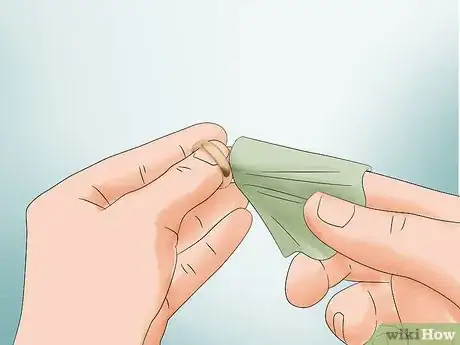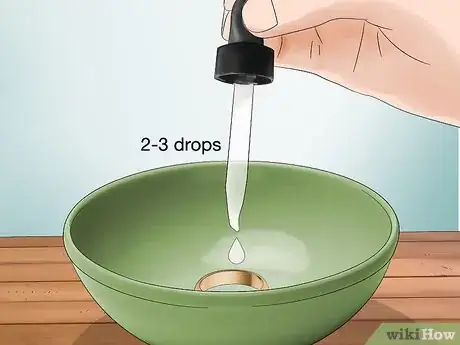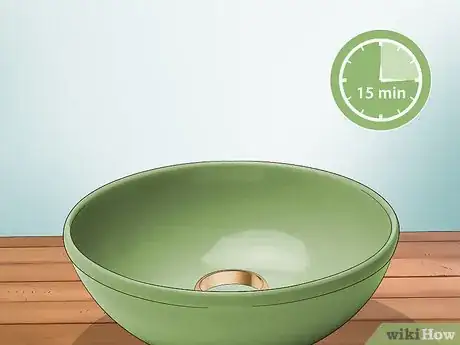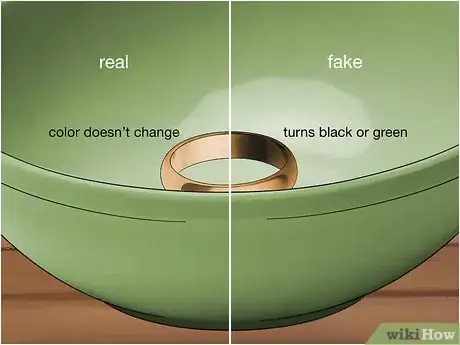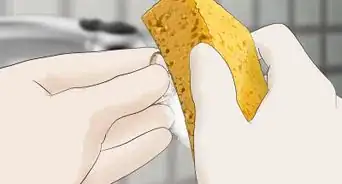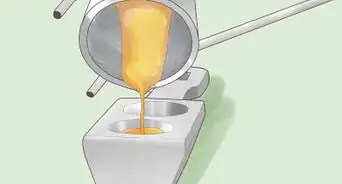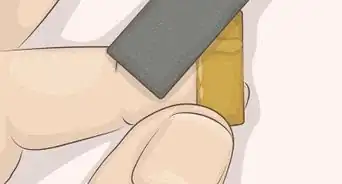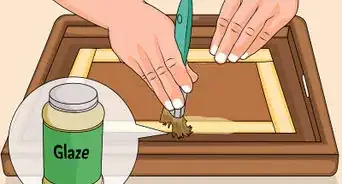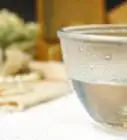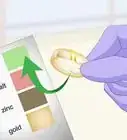This article was co-authored by wikiHow staff writer, Hannah Madden. Hannah Madden is a writer, editor, and artist currently living in Portland, Oregon. In 2018, she graduated from Portland State University with a B.S. in Environmental Studies. Hannah enjoys writing articles about conservation, sustainability, and eco-friendly products. When she isn’t writing, you can find Hannah working on hand embroidery projects and listening to music.
wikiHow marks an article as reader-approved once it receives enough positive feedback. In this case, 93% of readers who voted found the article helpful, earning it our reader-approved status.
This article has been viewed 108,489 times.
Learn more...
Gold is a beautiful metal that can be found in jewelry, coins, and watches. You may have just bought a new piece and want to see if it’s real, or test the genuineness of an old family heirloom. Testing gold with vinegar is a simple method to see if your gold is real, and by using white vinegar and an eyedropper, you can conduct this test yourself at home while keeping your gold pieces safe.
Steps
Applying the Vinegar
-
1Fill an eyedropper with white vinegar. White vinegar is the most acidic vinegar, so it works the best for testing gold. It is also clear-colored, so it will show a color change the best. You’ll want to use an eyedropper to pour your vinegar so that you can control the amount that you put on your gold piece. Fill the eyedropper about halfway, or enough for a couple of drops.[1]
- You can buy eyedroppers at most drug stores or online.
- If your gold piece is particularly large, you can use a measuring cup to pour vinegar on it instead.
- White vinegar is also very good for cleaning household appliances, so you can keep any that you have left over for another use.
-
2Clean your gold with a cloth or rag to remove dirt or debris. Your gold piece should be clean so that your test results are clear and you don’t have anything else discoloring the vinegar. You can use a wet or dry paper towel or a glasses cleaning cloth to gently wash your gold piece.[2]
- Real gold is soft and can get marks or indents left in it, so use caution while cleaning your gold.
Advertisement -
3Use an eyedropper to put 2 or 3 drops of vinegar on your gold. You can set your gold piece in a bowl or on a plate to collect any vinegar that runs off of it. You only need to put a couple of drops of vinegar on your gold, or enough where the vinegar can stay in contact with it for a couple of minutes.[3]
- You don’t need to soak the gold in the vinegar. Simply letting the vinegar touch your gold piece is enough to test it.
-
4Let the vinegar sit for 15 minutes. The acid in the vinegar takes a couple of minutes to react with gold and other substances. Keep the vinegar sitting on your gold piece for at least 15 minutes, just to make sure it has gotten enough time to react.[4]
-
5Watch the gold for color changes like black or green to see if it is fake. If your gold piece turns black or green when the vinegar is on it, or if it starts to smoke or fizzle at all when the vinegar touches it, it is most likely not real gold. If your gold piece does not change colors and does not fizzle or react to the vinegar in any way, it is probably real.[5]
- The acid in white vinegar breaks down many chemicals, but it won’t break down gold.
Cleaning Up
-
1Run your gold under cool water to remove the vinegar. You probably don’t want your gold to smell like vinegar forever, so you can run your piece under cool water for a few minutes, or until the vinegar smell is not noticeable anymore. You can also spray it with a water bottle if you are worried about losing your gold down the drain.[6]
- If you do run a piece of jewelry under a tap and it is small, you should put a stopper in your drain so that there is no chance of losing it.
-
2Pat your gold dry with a cloth or towel. After you’ve rinsed off your gold piece, you can gently pat it dry. Use a paper towel or a non-abrasive cloth to make sure that you don’t mark up your gold. Making sure that your piece is dry helps to keep it from tarnishing.[7]
-
3Pour your used vinegar down the drain. Even if your gold piece turned colors and there is residue in it, you can pour any vinegar that you used down your kitchen or bathroom sink. Vinegar is not harmful to pipes, and might actually help clear out any clogs that you may have, and whatever came off of your gold piece into the jewelry is so minuscule that it will not hurt your drain.[8]
References
- ↑ https://ourpastimes.com/test-gold-vinegar-5854786.html
- ↑ https://ourpastimes.com/test-gold-vinegar-5854786.html
- ↑ https://sciencing.com/test-rock-gold-4471786.html
- ↑ https://www.youtube.com/watch?v=pzaKMePtwik&feature=youtu.be&t=129
- ↑ https://www.youtube.com/watch?v=_n0MF5qccW4&feature=youtu.be&t=127
- ↑ https://ourpastimes.com/test-gold-vinegar-5854786.html
- ↑ https://www.today.com/style/how-clean-your-sterling-silver-gold-jewelry-home-t128503
- ↑ https://www.today.com/series/one-small-thing/how-often-should-you-clean-drains-right-way-do-it-t114416

